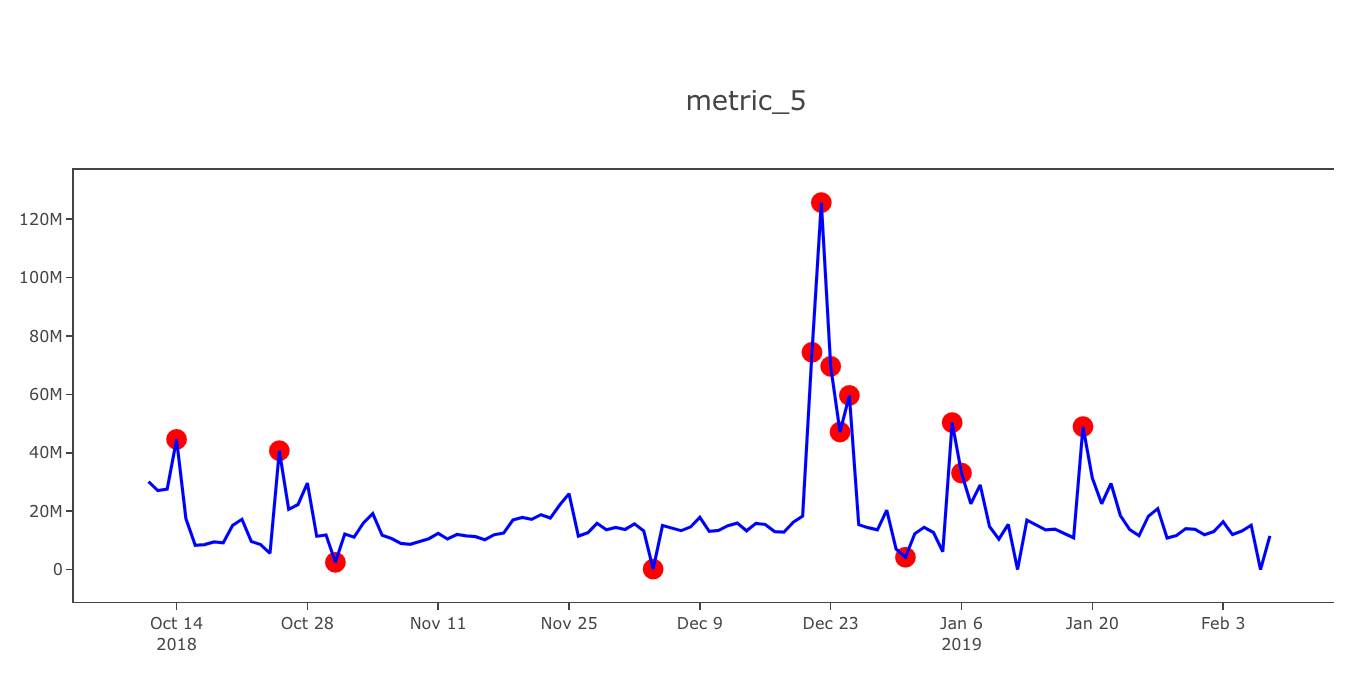

These include: Unsupervised Anomaly Detection Thanks to machine learning, anomaly detection is now available through different formats. Anomaly detection can help digital teams streamline their ability to find ways to enhance their company’s performance and give them more time to take advantage of these opportunities. Identifying potential opportunities: Detecting anomalous data doesn’t always indicate a negative finding – it could also be a potential opportunity that businesses can take advantage of.Today, even a minor company can use a network anomaly approach to increase its efficiency and bottom line. Improving organizational efficiency: Technology continues to improve each year, allowing for processes like anomaly detection to become accessible even for smaller entities.

With anomaly detection, companies can rely on AI algorithms to help scan and automate KPI analysis – freeing up time for data experts to perform other key tasks. The problem here is that such tasks can become time-consuming, especially where big data is concerned.
#Anomaly detection manual#
Analyzing KPIs automatically: Many organizations are still relying on manual techniques when managing data throughout various dashboards. With anomaly detection, security teams will immediately be notified whenever there’s an anomaly detected. Security breach prevention: Cybercriminals are constantly learning new exploits and improving their hacking techniques to overcome online security measures. To give you an idea of how it can benefit businesses, let’s take a look at some of the main reasons for using anomaly detection: The good news is that advances in artificial intelligence (AI), deep learning, and machine learning have made anomaly detection more accessible and straightforward. If you are learning about anomaly detection, the term itself may sound quite intimidating due to its technical nature. What is the Purpose of Anomaly Detection? When incorporated into anomaly detection systems, these platforms can learn and provide answers when users require them. Self-learning capabilities: Self-learning is perhaps one of the best traits of AI. These platforms can instantly recognize anomalies and send out the appropriate triggers as needed. Real-time data analysis: Anomaly detection systems can detect and process data in real-time. Meticulousness: Normally unnoticeable by human operators, AI-powered anomaly detection systems can provide monitoring that catches even the most minute details. Data accuracy: AI can accurately pinpoint and notify users whenever worthwhile anomalies have been detected, minimizing the potential of false positives/negatives from being triggered. This allows them to tweak important parameters to reveal opportunities while identifying potential issues. Automation: Anomaly detection algorithms that are powered by artificial intelligence are capable of going through datasets dynamically. As a result, anomaly detection is an important tool for data analysis, but it should be used with caution.Īnomaly detection in AI provides a number of benefits including: In particular, it can be difficult to determine what constitutes an anomaly, and false positives are often a problem. However, anomaly detection is not without its challenges. Common techniques include clustering, statistical analysis, and machine learning.Īnomaly detection is an active area of research, and new methods are constantly being developed. There are a variety of methods for anomaly detection, but they all share the goal of identifying outliers in a dataset. This can be useful for identifying fraudulent activity, detecting hardware failures, or flagging unusual patterns in financial data. Is Anomaly Detection Supervised or Unsupervised Learning?Īnomaly detection in AI refers to the identification of data points that do not conform to the expected behavior. What is the Purpose of Anomaly Detection?.






 0 kommentar(er)
0 kommentar(er)
